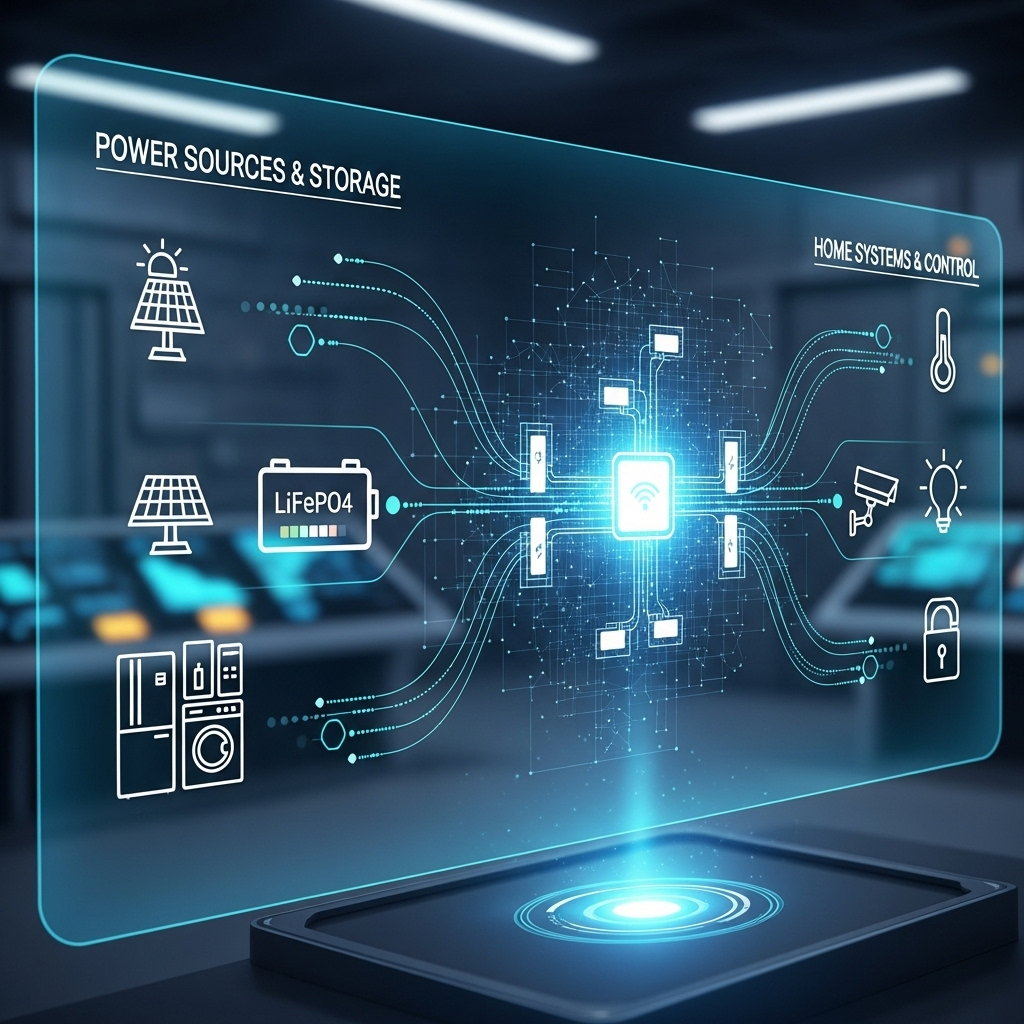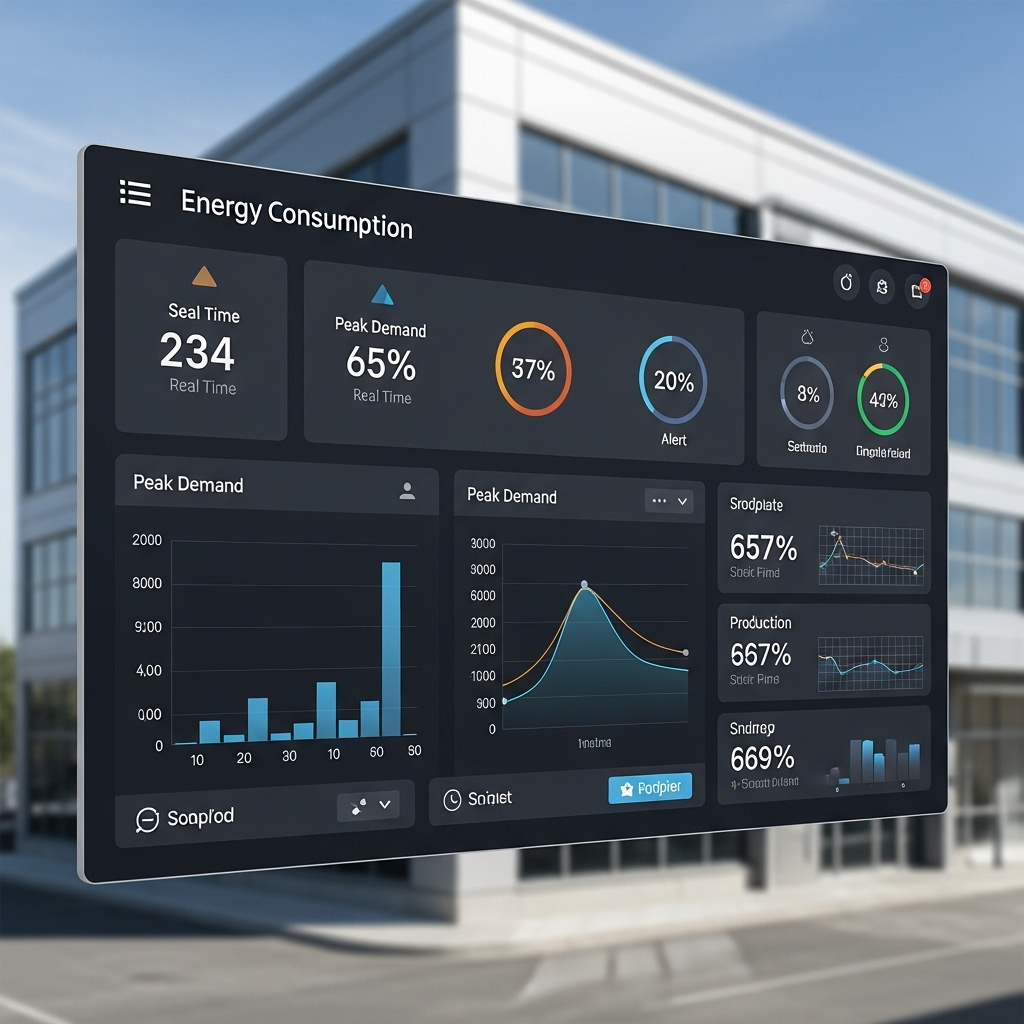Commercial and industrial (C&I) facilities face a dual challenge: volatile energy prices and an increasing need for grid reliability. An on-site Energy Storage System (ESS) is a powerful tool for managing costs through peak shaving and ensuring operational continuity. But what if that same asset could also generate a new revenue stream? This is achievable by participating in Demand Response (DR) markets. This case study shows how the OpenADR 2.0b communication standard provides the critical link for C&I ESS to seamlessly integrate with and profit from grid-support programs.
The Convergence of C&I ESS and Demand Response
Pairing a C&I energy storage system with a DR program creates a symbiotic relationship. The facility gains a source of income, while the grid gains much-needed flexibility. This synergy is becoming a cornerstone of modern energy management.
What is a Commercial & Industrial (C&I) ESS?
A C&I ESS is more than just a large battery. It is an intelligent system designed to store electrical energy for later use. Typically built with high-performance, safe, and reliable lithium iron phosphate (LiFePO4) batteries, these systems serve multiple functions. They can reduce electricity bills by discharging during peak-rate hours (load shifting) or by offsetting the highest points of consumption (peak shaving). They also provide backup power during outages, protecting critical operations.
Understanding Demand Response (DR) Markets
Demand Response programs are financial incentives offered by utilities to commercial and residential customers who temporarily reduce their electricity consumption during periods of high demand. This reduction helps grid operators maintain stability and avoid blackouts without firing up expensive and less efficient 'peaker' power plants. As noted by the International Energy Agency, effective demand-side management is a vital part of power system modernization. A report on China Power System Transformation highlights that adjusting consumer energy behavior is a key strategy for grid balancing. For a C&I facility, participating in DR means its ESS can automatically discharge to power the building, thereby reducing its draw from the grid and earning payment for that service.
The Role of OpenADR: A Common Language for the Grid
For a C&I ESS to participate in a DR program, it must be able to communicate with the utility. This is where a standardized protocol becomes indispensable, automating what would otherwise be a complex and manual process.
Why a Standardized Protocol is Necessary
Without a common communication standard, connecting a facility's ESS to a utility's DR management system is a custom, costly, and time-consuming integration project. Each utility and each equipment manufacturer might use a different proprietary protocol, creating a fragmented and inefficient ecosystem. A universal standard removes this barrier, enabling scalable and reliable communication between the grid and its distributed energy resources.
Introducing OpenADR 2.0b
OpenADR (Open Automated Demand Response) is an internationally recognized, secure, and open-source communication standard. It was specifically designed to automate and simplify participation in demand response programs. The '2.0b' profile is a mature and widely adopted version of the standard, ensuring interoperability between different systems and devices. It acts as a universal translator, allowing utilities and customer-owned assets like an ESS to speak the same language.
How OpenADR Automates Participation
The process is straightforward and automated. The utility's DR system, known as a Virtual Top Node (VTN), sends out a DR event signal. An OpenADR-compliant device at the customer's site, called a Virtual End Node (VEN), receives this signal. The VEN then instructs the ESS controller to take a pre-programmed action, such as discharging the battery at a specific rate. The system then reports its compliance back to the utility, ensuring the action is verified and compensated. This entire sequence happens automatically in near real-time, requiring no manual intervention.
Case Study: A Manufacturing Facility's Integration Journey
Consider a mid-sized manufacturing facility with high energy consumption. The company had already installed a 500 kWh LiFePO4 ESS to manage its high peak demand charges. The system was effective at saving costs but operated in isolation from the grid.
The Challenge: Unlocking New Revenue
The local utility offered an attractive DR program that paid participants for reducing load during grid emergencies. The facility's management saw an opportunity to turn their ESS into a revenue-generating asset. The problem was that their ESS controller could not directly communicate with the utility's DR platform. A communication bridge was needed.
The Solution: Implementing an OpenADR 2.0b Gateway
The facility worked with an energy solutions provider to integrate an OpenADR 2.0b-certified gateway. This device acted as the VEN, translating the utility's DR signals into commands the ESS could execute. The implementation involved three key steps:
- Assessment: The team confirmed the utility's DR program used the OpenADR 2.0b standard and selected a compatible gateway.
- Integration: The gateway was physically installed and connected to both the facility's network and the ESS control system's communication port.
- Configuration: The system was programmed with specific responses. For example, a 'high' level DR event would trigger the ESS to discharge at its maximum rate to power the facility's internal loads, while a 'moderate' event might trigger a 50% discharge rate.
The Results: Measurable Financial and Operational Gains
Within the first quarter of participation, the benefits were clear. The facility not only continued to save on peak demand charges but also started earning significant monthly revenue from the DR program. This aligns with findings in the IEA report, The Power of Transformation, which states that increasing the flexibility of power systems through demand-side integration leads to more cost-effective operations for the entire grid.
| Metric | Before DR Integration (Monthly Avg.) | After DR Integration (Monthly Avg.) |
|---|---|---|
| Peak Demand Charges | $8,500 | $4,000 |
| DR Program Revenue | $0 | $2,500 |
| Total Monthly Benefit | $4,500 (Savings) | $7,000 (Savings + Revenue) |
Note: Figures are illustrative and vary based on utility rates, program specifics, and system size.
Best Practices for C&I Businesses
Successfully leveraging an ESS in DR markets requires careful planning. Following these best practices can help ensure a smooth and profitable integration.
Evaluating Your Facility's DR Potential
Start by analyzing your facility's energy consumption data, or load profile. Businesses with high energy usage, significant peak demand, and some operational flexibility are ideal candidates. Identify loads that can be shifted or supported by the ESS without disrupting core business activities.
Selecting the Right ESS and Integration Partner
Choose an ESS with a sophisticated Battery Management System (BMS) and proven communication capabilities. When comparing systems, it is important to look beyond capacity. As outlined in the 'Ultimate Reference to Solar Storage Performance', metrics like round-trip efficiency, depth of discharge, and cycle life are critical for determining long-term value and profitability. Partnering with an integrator experienced in OpenADR and utility programs is also crucial.
Navigating DR Program Enrollment
DR programs can be managed directly by the utility or by third-party aggregators who bundle smaller loads together. Research the programs available in your area to understand their requirements, payment structures, and performance expectations. An experienced partner can help navigate the enrollment process and optimize your participation strategy.
Looking Ahead: The Future of C&I ESS in Grid Services
Demand Response is just the beginning. Standards like OpenADR are paving the way for C&I energy storage systems to participate in a wider range of grid services. This includes providing frequency regulation, voltage support, and participating in wholesale energy markets. As grids continue to modernize and incorporate more renewable energy, the ability of distributed assets to provide automated, rapid support will become even more valuable. This evolution is part of a larger trend identified by the IEA to transform global markets for clean energy products, where intelligent and interconnected devices play a central role.
Frequently Asked Questions
What is the main difference between OpenADR and Green Button?
They serve different functions. Green Button is a standard for providing customers with secure access to their historical and current energy usage data; it is primarily for information access. OpenADR is a two-way communication protocol designed for automated control actions, specifically enabling assets like an ESS to respond to grid signals. They can be used together but are not interchangeable.
Is my business eligible for Demand Response programs?
Eligibility typically depends on your local utility's specific programs and your facility's energy consumption patterns. Generally, C&I customers with significant and somewhat flexible electrical loads are prime candidates. The best first step is to contact your utility provider or a qualified energy consultant to review your options.
Do I need a new energy storage system to use OpenADR?
Not always. If your existing ESS has a flexible control system or a modern BMS with communication ports, you can often integrate a certified OpenADR gateway to enable participation. However, many new C&I ESS solutions are now designed with OpenADR or similar communication capabilities built-in.
What are the primary financial benefits of joining a DR market with my C&I ESS?
The financial benefits are twofold. First, you earn direct revenue from the utility or aggregator for successfully participating in DR events. Second, you continue to lower your electricity bill by reducing expensive peak demand charges. This strategy effectively turns your ESS from a cost-saving asset into a revenue-generating one.
Is the integration process difficult?
The complexity depends on your existing infrastructure. The purpose of the OpenADR standard is to simplify this process. Using certified products and working with an integrator who has experience with both your ESS technology and utility programs can make the integration relatively straightforward.
Disclaimer: The information provided is for educational purposes only and does not constitute financial or investment advice. Consult with a qualified professional before making any decisions related to energy system investments or program participation.





Leave a comment
All comments are moderated before being published.
This site is protected by hCaptcha and the hCaptcha Privacy Policy and Terms of Service apply.